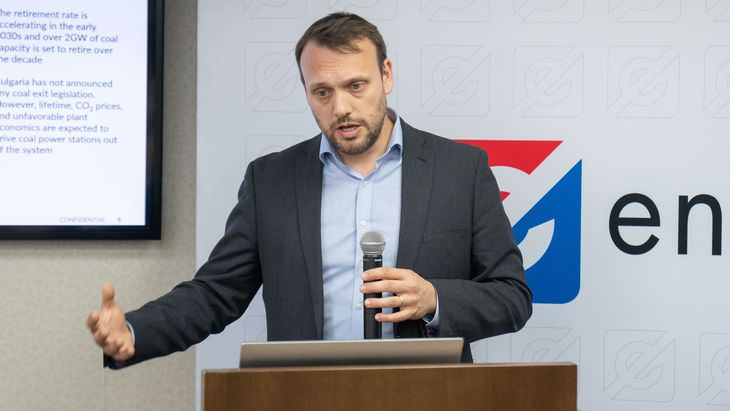Shutting down the coal-fired power plants in the coming years and increasing commodity prices will lead to a large growth of the renewables sources but will also increase the system’s intermittency, and, in the end, will cause intraday price volatility and higher commodity prices.
”Last year has been a very different year because of the COVID-19 impact. We saw the demand drop dramatically, and also the prices were much lower. But since then, we have seen a very dramatic increase in prices. In 2021, prices went up by more or less three times the price in 2020. And then in 2022, we had even more demand, but also supply pressures. That meant that we ended up with prices that were about five times what they used to be pre-COVID times”, said Evangelos Gazis, Aurora Energy Research, at the conference “Regional Approach Sofia”, organized by Energynomics.
The company is expecting a further drop in gas prices over the next three to four years, mainly driven by the future increase in natural gas and LNG supply across Europe, but also due to the decreasing demand. Also, the energy prices will reach a low by 2026-2027 but after that point another mild increase is expected.
”The main driver, as I hinted, is commodity prices. So, gas and carbon are the main drivers for power prices. And we have seen here how this has evolved over the last couple of years”, Gazis added.
Because of the new policies across Europe for decarbonization, which are expected to continue, the CO2 emissions trading prices are expected to grow up to 150 euros per ton by 2060. According to the company, Bulgaria’s coal fleet is expected to more than halve by the early 2030s while a full coal exit is expected by 2038, while Romania’s coal fleet is expected to be reduced by more than 50% by 2026 and eventually fully retire by 2032. On the other hand, the retired coal power plants could be replaced by gas CCGs across the Southeastern European region.
”I think we expect something like 1.5 GW of new gas capacity in Bulgaria, another 2 in Romania, 2.5 in Greece”, he added.
DOWNLOAD THE PRESENTATION OF EVANGELOS GAZIS
Another important factor will be hydrogen, but renewables are expected to play a very important role as well. The energy demand is growing across the region, mainly driven by the electrification of different sectors of the economy, and to be able to produce hydrogen using electricity, Bulgaria will have to add more 12 TWh to the system from 2025 to 2040, and about 10 TWh in Romania. As a consequence, the demand for electricity will go up.
In the next eight years, Aurora estimates that Bulgaria will also add more than 5 GW of renewables to the system, mainly solar projects, and 9.3 GW in Romania. At the same time, both countries are expected to invest in batteries with a total capacity of three gigawatts.
Aurora Energy Research is a company that provides energy market analytics and advisory services. The company operates in 11 offices around the world now, mostly in Europe, but also in the United States and Australia that cover the entire spectrum of energy markets from power, gas, hydrogen and electric vehicles. Also, Aurora Energy Research has established in Athens a team of 15 people covering markets including Greece, Romania, Bulgaria, Serbia, Slovenia, Croatia, and Hungary.
The conference “Regional Approach Sofia” was organized by Energynomics with the support of our partners: Eaton Electric, Finder, Kawasaki Gas Turbine Europe.
